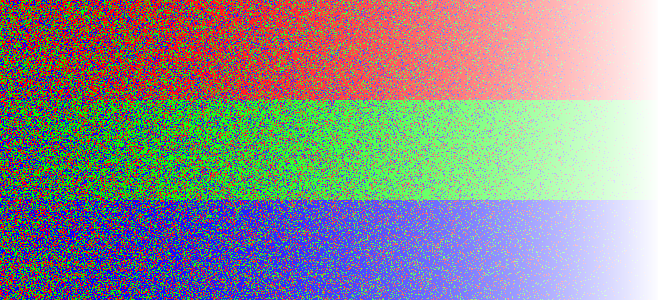posted March 13 2012
lcd scrub

I promised myself that there would be no new major purchases until my dissertation is complete. And then there was a sudden and somewhat unexpected inflow of extra cash, and well, you know how it goes. I am now the proud owner of a shiny new Sceptre LCDTV (42”, 1080p, and more HDMI inputs than I know what to do with). I’m very pleased with it, especially given the bargain basement price. Let’s hear it for no-name brands that deliver on their fundamentals.1
There is, however, one tiny problem. A very tiny problem. The TV has one “stuck” pixel. In most practical viewing conditions I’ll never, ever notice it; it’s one malfunctioning pixel in a field of over two million. It’s only visible when the screen is completely black, and even then, I’ve got to be looking for it. It’s no big deal, and not worth the hassle of boxing the whole thing up and sending it back to Newegg.
Still, it’s there. And though it may not materially impact my viewing experience, I will always know.There are various ways to cure a stuck pixel, from physically “massaging” the area to flashing images on the monitor to try to “scrub” it out. The effectiveness of these methods varies from device to device, which is why I am absolutely galled—galled, I tell you—to find that some people are actually charging for image-flashing software. Software which, let me emphasize, may not even work for your particular pixel problem.
So here’s LCD Scrub, a “pixel scrubbing” program that I’m releasing for free. It was built in Processing (easily, I might add), and the source code is included. Here are the details:
- Start the application and simply move your mouse over it to display a handy help pop-up.
- LCD Scrub can display several solid-color screens: black, white, red, green, and blue. These are handy for checking your screen for any stuck pixels. If a pixel appears black on the white screen setting, that pixel is likely “dead” entirely.
- The “color cycle” mode will rapidly flash between black, white, and random colors. This is the mode that will hopefully “unstick” your pixels. At the least, it will remove any burn-in from your screen. Warning: could totally cause a seizure.
- The speed of the color cycle mode can be adjusted with the up and down arrow keys.
- Zip file includes versions for Mac, Windows, and Linux. If you don’t have a convenient way to hook up your computer directly to your TV, I’ve also included a plain video of the “color cycle” setting. Stream away.
I’d recommend running the color cycle mode (or looping the video file) for an hour or two to see if that fixes your stuck pixel. I make no guarantees about the effectiveness of this software, nor will I be held responsible in the highly unlikely event that the software damages your screen. LCD Scrub has so far failed to unstick my pixel, but then again, I haven’t run it for a decent length of time (my screensaver kicked in). My pixel may come unstuck simply through repeated use of the TV. I’ve seen it happen. In any case, here’s hoping this little tool helps you out.
-
Funny story. About three months after this post was written, the TV was stolen right out of my first-floor apartment. I eventually replaced it with a much better TV that wasn’t as prone to burn-in and had no stuck pixel issue. ↩